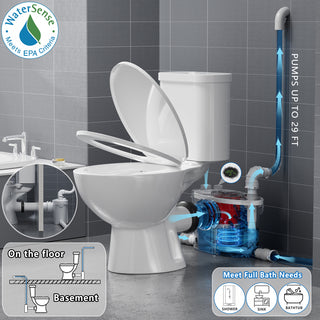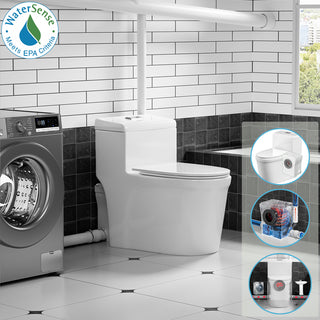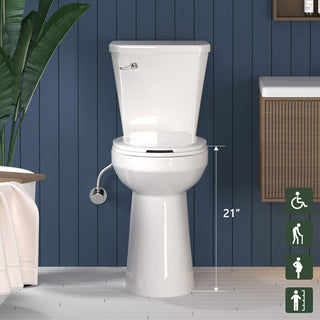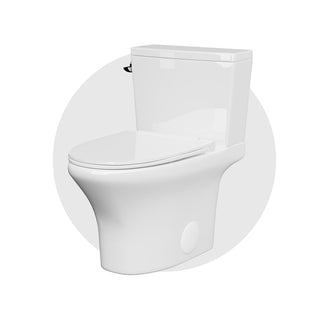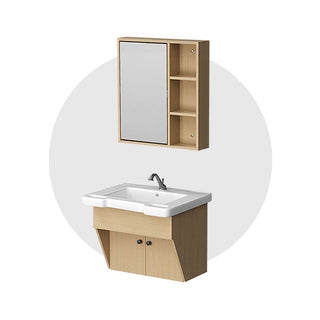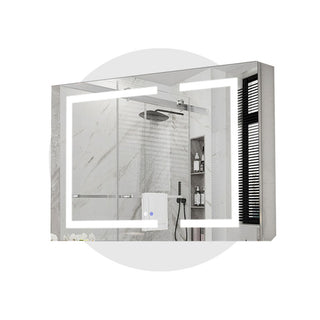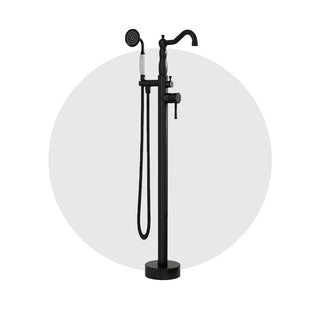A weak toilet flush that fails to clear waste in one go is a common frustration, especially for older toilets or rental properties. But do you need to hire a plumber or replace your toilet entirely, or are there simpler ways to fix the issue yourself?
In this blog post, we’ll help you identify the root causes of weak flush pressure and walk you through effective solutions.
Ⅰ. Understanding How a Toilet Works
Flushing a toilet seems straightforward, but the process involves several key components working together. Here’s a breakdown:
1. Water Source
Toilets either connect directly to the home’s water supply (tankless toilets) or use a water tank to store water between flushes. This article focuses on tank toilets.
2. Flushing Mechanism
Inside the tank, two key components control water flow:
- Fill Valve: Regulates water entering the tank.
- Flush Valve: Releases water into the toilet bowl when flushed.
* If you would like to learn more details, please refer to our blog: Do you know how the 'heart' of a toilet works?
When you press the flush button or handle, the flush flapper lifts, allowing water to flow into the bowl.
3. Water Flow into the Bowl
How does water flow into the toilet bowl? This is a question that not many people think about. In fact, once released, water follows two main paths:

* The image uses the classic design of the ELEMAZ 21" Tall Toilet as an example.
- Path1 - Rim Jets (small holes around the inner rim): Water flows down the bowl walls to help push waste toward the drain.
-
Path2 - Siphon Jet (large hole at the bottom of the bowl): Water rushes out forcefully to create suction, pulling waste into the drainage system.

4. Toilet Flush Finished
Ⅱ. Causes & Solutions for Weak Flush Pressure
A weak flush is generally caused by one or more of these factors: insufficient water volume, slow flow rate, or blockages. Below are the key troubleshooting steps:
1. Ensure Sufficient Water Volume
✅ Check if the tank is filling completely
After flushing, wait about 1 minute for the tank to refill.
✅ Increase the water level in the tank
Typically, toilet manufacturers pre-set the float switch of the fill valve to maintain a certain water level. If you believe that the current water level is insufficient for your needs, you can adjust it to increase the water volume. For detailed instructions, please refer to: How to Adjust Water Level in Toilet Tank?
✅ Maximize Flush Volume
- Hold the flush handle down slightly longer to allow more water to exit.
- Some toilets allow manual flush volume adjustment. If your toilet has an adjustable flush valve, set it to the maximum flush setting.

* The image uses our SNFLEX two-piece macerating toilet as an example. The flush valve twist bottom for full and half flush is used to adjust the water volume per flush. Pulling the twist bottom to the lowest position allows for the maximum flush volume.
2. Improve Water Flow Speed
✅ In some cases, pressing the button or handle too lightly may affect the water flow rate.
✅ If your toilet uses a chain to lift the flapper, shortening the chain slightly may help.
3. Remove Blockages
Clogs are the most common cause of low toilet flush pressure. As explained in the first point about how a toilet works, blockages can occur in three areas in a toilet system: the drainpipe, the tank, or the flush holes. Here’s how to check and fix them:
✅ Drain Pipe Blockage
- Test with Hot Water
Pour 1 gallon of warm water (not boiling) into the bowl. If it drains slowly, you likely have a clog.
- Use a Plunger or Drain Cleaner
Try a plunger first. If that doesn’t work, use a drain snake or mild drain-cleaning solution.
✅ Tank Blockage
- Inspect the inside of the tank to ensure there are no visible foreign objects that could be obstructing water flow.
- Examine the flush flapper for debris buildup or wear. A damaged flapper may not release water efficiently.
- Clean the Tank to Remove Mineral Buildup from restricting water flow.
Standing water in the tank can accumulate calcium, lime, and other mineral deposits, especially in hard water areas. Over time, these deposits stick to the tank walls and internal components, potentially damaging parts and reducing water flow efficiency.
How to Clean the Tank:
1) Pour vinegar, or mix 40-50°C warm water with drain cleaner, dish soap, mild detergent into the tank.
2) Let sit for 30 minutes to dissolve buildup, then flush.
✅ Rim Jets & Siphon Jet Blockage
- Check the toilet flush holes:
For example, use a discarded clothes hanger to make a hook and clear any foreign matters that may have accumulated in the rim jets and siphon jet.
- Over time, mineral deposits and debris can clog these openings, reducing water flow.
How to Clean the Rim Jets & Siphon Jet:
1) Turn Off Water & Flush: Clean the toilet bowl, shut off the water supply and flush to empty the tank.
2) Seal the Rim Jets: Use waterproof tape to temporarily block the small holes under the toilet rim.
3) Pour Cleaning Solution: Use white vinegar, or mix warm water (40-50°C) with drain clean, dish soap, or mild detergent, then pour into the overflow tube inside the tank.
*Avoid excessively hot water to prevent harmful fumes or damage to the toilet.
4) Let It Soak: Allow the solution to sit for at least 30 minutes to break down mineral buildup inside the water flow paths.
5) Remove Tape & Scrub: Take off the tape, turn the water supply back on, and flush multiple times. Use a stiff-bristle brush to scrub off any remaining deposits.
6) Repeat if Necessary: Perform this cleaning 2-3 times if needed for improved flush performance.
7) Ongoing Maintenance: To prevent future buildup, repeat this process every 2-4 weeks for optimal toilet function.
4. Consider Replacing the Toilet
If your toilet is very old and none of the above solutions work, replacing it with a modern, high-efficiency model might be the best long-term solution.
Ⅲ. Conclusion
By identifying the root cause of weak flush pressure, you can take targeted action to improve your toilet’s performance. Regular maintenance, proper cleaning, and occasional adjustments can keep your toilet flushing powerfully for years to come!
If you have any questions or need further assistance, feel free to contact us!


